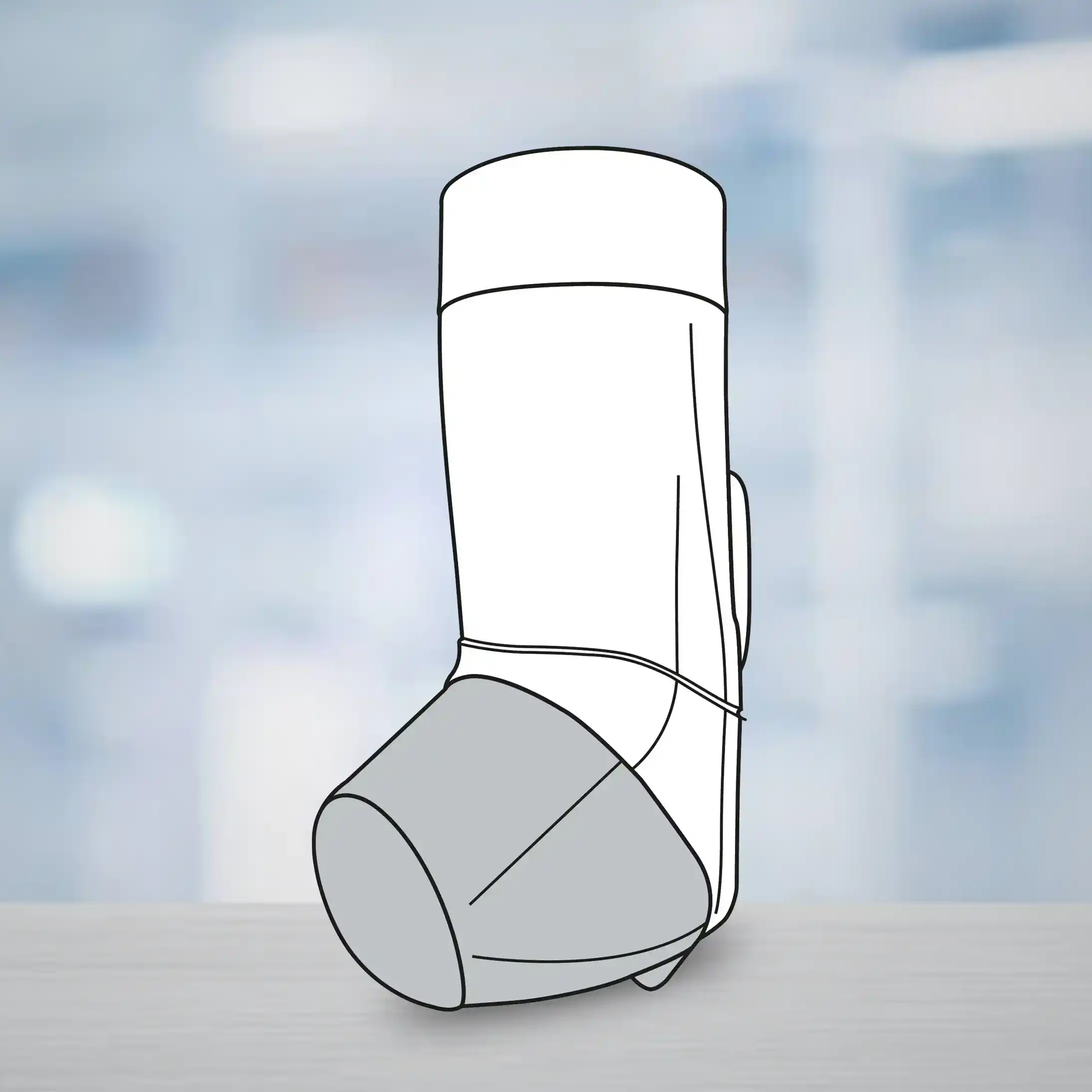Composition
TRIVEDON MR Tablets
Each film-coated modified-release tablet contains trimetazidine dihydrochloride...... 35 mg
Dosage Form
Modified-release Tablet
Pharmacology
Pharmacodynamics
By preserving energy metabolism in cells exposed to hypoxia or ischemia, trimetazidine prevents a decrease in intracellular adhenosine triphosphate (ATP) levels, thereby ensuring the proper functioning of ionic pumps and transmembrane sodium-potassium flow whilst maintaining cellular homeostasis.
Trimetazidine inhibits beta-oxidation of fatty acids by blocking long-chain 3-ketoacyl-CoA thiolase, which enhances glucose oxidation. In an ischemic cell, energy obtained during glucose oxidation requires less oxygen consumption than in the beta-oxidation process. Potentiation of glucose oxidation optimizes cellular energy processes, thereby maintaining proper energy metabolism during ischemia.
In patients with ischemic heart disease, trimetazidine acts as a metabolic agent, preserving the myocardial high-energy phosphate intracellular levels. Anti-ischemic effects are achieved without concomitant hemodynamic effects.
Pharmacokinetics
By oral route, maximum concentration is observed, on average, five hours after taking the tablet. Over 24 hours, the plasma concentration is maintained at concentrations greater than or equal to 75% of the maximum concentration for 11 hours.
Steady state is reached by the 60th hour, at the latest.
- The pharmacokinetic properties of trimetazidine 35 mg are not influenced by meals
- The apparent distribution volume is 4.8 l/kg, trimetazidine protein binding is low: its value measured in vitro is 16%
- Trimetazidine is eliminated primarily in the urine, mainly in the unaltered form
- The elimination half-life of trimetazidine 35 mg is, on average, seven hours in young healthy volunteers, and 12 hours in subjects over the age of 65
- Total clearance of trimetazidine is the result of major renal clearance, which is directly correlated to creatinine clearance and, to a lesser extent, to hepatic clearance, which reduces with age
- A specific clinical study, performed in an elderly population, at a dosage of 2 tablets per day taken in 2 doses, analysed by a kinetic population method, showed an increase in plasma exposure
Indications
TRIVEDON MR is indicated in adults as add-on therapy for the symptomatic treatment of patients with stable angina pectoris who are inadequately controlled by or intolerant to first-line antianginal therapies.
Dosage and Administration
The dose is one tablet of TRIVEDON-MR twice daily i.e., one in the morning and one in the evening during meals.
The benefit of the treatment should be assessed after three months and trimetazidine should be discontinued if there is no treatment response.
Special Population
Patients with Renal Impairment
In patients with moderate renal impairment (creatinine clearance 30-60 ml/min), the recommended dose is one tablet of TRIVEDON-MR in the morning during breakfast.
Elderly Patients
Elderly patients may have increased trimetazidine exposure due to age-related decrease in renal function. In patients with moderate renal impairment (creatinine clearance 30-60 ml/min), the recommended dose is one tablet of TRIVEDON-MR in the morning during breakfast.
Dose titration in elderly patients should be exercised with caution.
Pediatric Population
The safety and efficacy of trimetazidine in children aged below 18 years have not been established. No data are available.
Contraindications
- Hypersensitivity to the active substance or to any of the excipients
- Parkinson disease, parkinsonian symptoms, tremors, restless leg syndrome, and other related movement disorders,
- Severe renal impairment (creatinine clearance
Warnings and Precautions
Drug Interactions
Not applicable.
Ischemic Heart Disease
This medicine is not a curative treatment for angina attacks, nor is it indicated as an initial treatment for unstable angina or myocardial infarction, nor in the pre-hospital phase or during the first days of hospitalization.
Coronaropathy
In the event of an angina attack, the coronaropathy should be reevaluated and an adaption of the treatment considered (medicinal treatment and possibly revascularization).
Neurological Symptoms
Trimetazidine can cause or worsen parkinsonian symptoms (tremor, akinesia, hypertonia), which should be regularly investigated, especially in elderly patients. In doubtful cases, patients should be referred to a neurologist for appropriate investigations.
The occurrence of movement disorders such as parkinsonian symptoms, restless leg syndrome, tremors, gait instability should lead to definitive withdrawal of trimetazidine.
These cases have a low prevalence and are usually reversible after treatment discontinuation. The majority of the patients recovered within 4 months after trimetazidine withdrawal. If parkinsonian symptoms persist more than 4 months after drug discontinuation, a neurologist opinion should be sought.
Falls may occur, related to gait instability or hypotension, in particular in patients taking antihypertensive treatment.
Renal Impairment
Caution should be exercised when prescribing trimetazidine to patients with moderate renal impairment as increased exposure of the drug is expected.
Pregnancy
There are no data from the use of trimetazidine in pregnant women. Animal studies do not indicate direct or indirect harmful effects with respect to reproductive toxicity. As a precautionary measure, it is preferable to avoid the use of TRIVEDON-MR during pregnancy.
Lactation
It is unknown whether trimetazidine is excreted in human milk. A risk to the newborns/infants cannot be excluded. Thus, TRIVEDON-MR should not be used during breast-feeding.
Pediatric Use
The safety and efficacy of trimetazidine in children aged below 18 years have not been established. No data are available.
Geriatric Use
Caution should be exercised when prescribing trimetazidine to elderly patients older than 75 years old as increased exposure of the drug is expected.
Undesirable Effects
Adverse reactions, defined as adverse events considered at least possibly related to trimetazidine treatment are listed below using the following convention frequency: very common (≥1/10); common (≥1/100 to <1/10); uncommon (≥1/1,000 to <1/100); rare (≥1/10,000 to <1/1,000); very rare (<1/10,000); not known (cannot be estimated from the available data).
Thrombocytopenia Thrombocytopenic purpura | ||
Overdosage
Not applicable.
Packaging Information
TRIVEDON MR: Blister pack of 10 tablets

.svg?iar=0&updated=20230109065058&hash=B8F025B8AA9A24E727DBB30EAED272C8)


